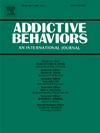Physical activity as a moderator of the association between alcohol consumption and hangovers
Abstract
Frequently mentioned anecdotally, hangovers are under-investigated within the scientific study of alcohol, as is the role of physical activity (PA) on hangovers. The well-established positive association between PA and AC (AC) suggests that PA may buffer negative physiological consequences of AC, including hangovers. The present study was therefore conducted in order to determine whether PA influences hangovers. Undergraduates (N=1676) from two large universities in the United States who experienced at least one hangover in the past three months and who engaged in at least 30 min of moderate PA per week were recruited to participate. Participants completed online questionnaires about their AC, PA, and frequency and severity of hangover symptoms. Both between- and within-person associations between AC and hangover were examined, factoring in the potential moderating effects of both moderate and vigorous PA. Small effects were observed for correlations between PA and outcomes assessing AC and hangovers (rs ranged from 0.09 to 0.15). Results also revealed that individuals who consumed more alcohol per month experienced hangovers more frequently and had more severe symptoms. These associations were attenuated among individuals who spent more hours engaging in vigorous but not moderate PA. The current study is the first to show PA influences the experience of hangovers, and we posit this may be a mechanism underlying the positive relationship between PA and AC. Our findings advance the growing literature on alcohol use and PA and may contribute to the development of interventions for alcohol-related problems and alcohol use disorders.

 求助内容:
求助内容: 应助结果提醒方式:
应助结果提醒方式:


